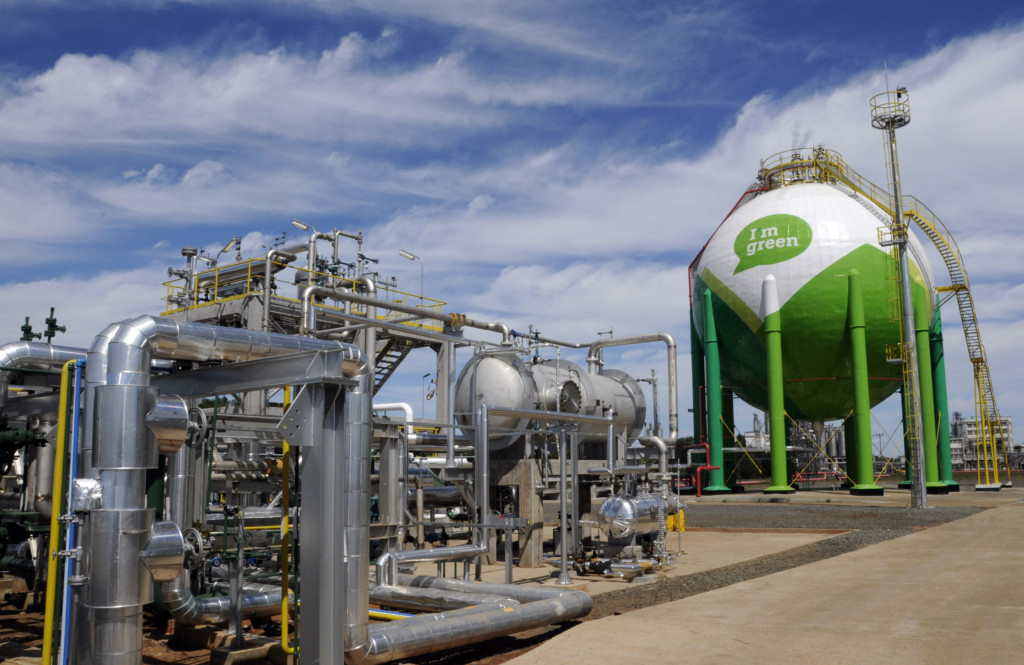
BRASKEM green ethylene plant in Triunfo (Photo: Mathias Cramer)
With an investment of R$7.1 million, the equivalent to over US$2 million, from 2013 to 2015 in its green ethylene unit in Triunfo, Rio Grande do Sul, Braskem, the largest thermoplastic resin producer in the Americas, was able to significantly reduce the CO2 emissions generated by its production of Green Plastic.
Braskem automated processes, installed devices to reduce losses, optimized the ethanol vaporization process and reduced the generator’s fuel consumption. It also is developing a wastewater reuse system to optimize its consumption of water resources.
Along with process improvements, Braskem’s concern with environmental impacts requires it to constantly review and enhance its Life Cycle Assessment (LCA) studies. For this reason, the Green Plastic LCA model was also updated with the most recent version of Ecoinvent’s database and indicates now a capture of 2.78 tons of CO2 for each ton of resin made from renewable resources. This new number represents an increase in carbon capture from the previous measurement. The study was conducted by the consulting firm ACV Brasil and subjected to a technical review by a panel formed by the Institute for Energy and Environmental Research GmbH (IFEU) and by Michigan State University. Green Plastic already holds a negative carbon footprint certification issued by the Brazilian Association of Technical Standards (ABNT).
What is an LCA?
The Life Cycle Assessment (LCA) is a technique for analyzing the environmental aspects and potential impacts associated with a product that considers the stages from the extraction of the raw materials from nature that are input to the production system to the manufacturing of the end product. The assessment enables Braskem to gain a better understanding of the environmental impacts of its products throughout its lifecycle.
Braskem’s latest LCA study will be presented at the 11th European Bioplastics Conference on 29/30 November 2016 in Berlin by Yuki Kabe, Braskem’s LCA specialist. You can still register here.